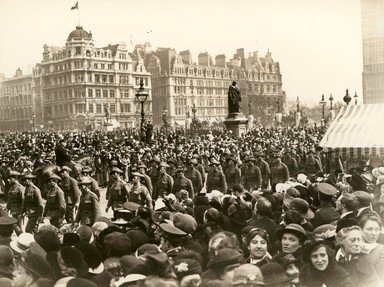Quiz Answer Key and Fun Facts
1. I'll ease you in gently as I'm sure you know when the American War of Independence took place. So, who was the King of France when the U.S. Declaration of Independence was signed?
2. Some relatively recent history now, with "a date that will live in infamy" according to U.S. President Franklin D Roosevelt. You probably remember the date, so who was the Pope on the day that Japan bombed Pearl Harbor?
3. You probably know that Abraham Lincoln, the 16th U.S. President, was in office virtually throughout the American Civil War. So, who was the British Prime Minister on the day that Lincoln was assassinated?
4. I'm sure you know that a man named Temüjin united the tribes of northeastern Asia and thus founded the Mongol Empire, and also that he took the name Genghis Khan (meaning "Great Emperor"). So, who was King of England when Genghis Khan founded the Mongol Empire?
5. Tenzin Gyatso, the 14th Dalai Lama, is the longest-lived person who ever held that title. So, who was President of the U.S.A. when Tenzin Gyats was born?
6. The British fleet arrived in Sydney Cove in 1788, which eventually led to six self-governing colonies within the British Empire. When those colonies united to form the Commonwealth of Australia, who was the Emperor of Austria and King of Hungary?
7. Tourists to the region around Naples in southern Italy invariably go to visit to remains of Pompeii, which was obliterated by Europe's the most destructive volcanic explosion ever. So, who was Roman Emperor when Mount Vesuvius put on its pyrotechnic display?
8. Back into the 20th Century, I'm sure you know when World War I started. So, who was President of France on the day that Archduke Franz Ferdinand of Austria was assassinated in Sarajevo?
9. The Incas had the largest and strongest Pre-Columbian empire in South America. From the arrival of the Spanish in Inca territory until the last sovereign emperor of the Incas was executed was less than a decade. So, who was King of Spain (also Holy Roman Emperor, King of Germany and King of Italy) at the time when his forces were wiping out a major civilization?
10. One of the most controversial people in English history, Oliver Cromwell came to power as Lord Protector following the English Civil War. Meanwhile, Sweden has enjoyed an uninterrupted monarchy stretching back more 1,000 years. So, who was on the Swedish throne when Cromwell began lording it over the British Isles?
Source: Author
EnglishJedi
This quiz was reviewed by FunTrivia editor
bloomsby before going online.
Any errors found in FunTrivia content are routinely corrected through our feedback system.

